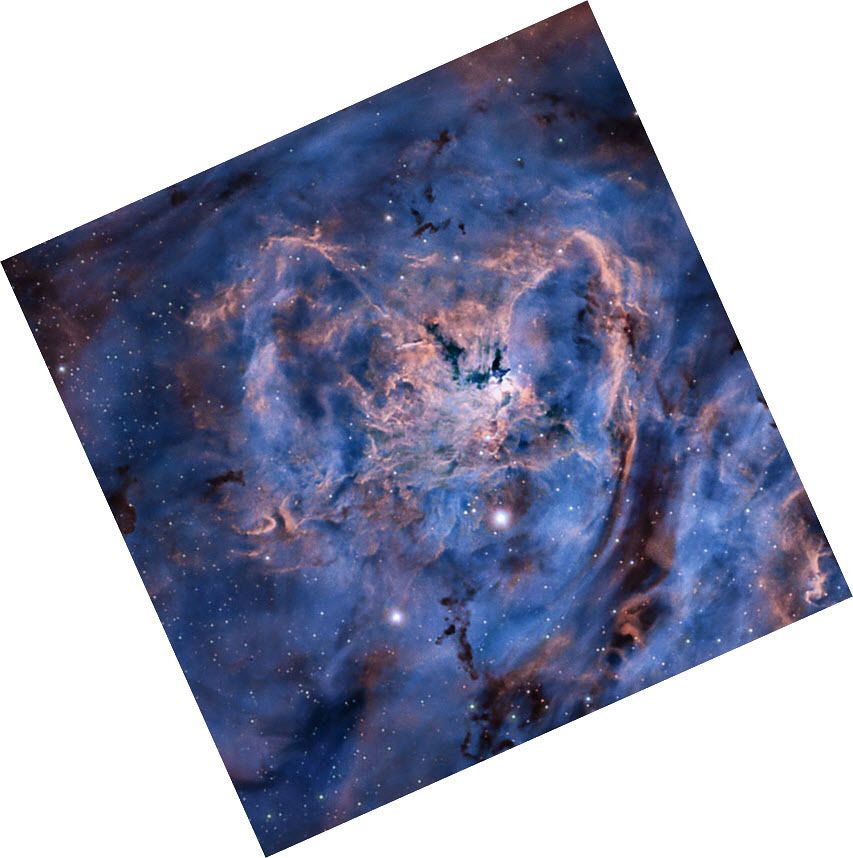Chris Peterson wrote:
Also, keep in mind that these objects which have names going back many decades all received those names based on visual telescopic views, where every single nebula looks like a fuzzy gray patch, usually showing nothing more than a faint shape and possibly some barely discernible structure created by dust lanes. In many ways, that makes it easier to give them simple names (in contrast to the fantastically detailed telescopic images we're used to today, where we see comments like "does anybody else see that red and green parrot sitting on a pirates shoulder down in the lower left section?")
They probably almost all received those names based on subjective responses to a variety of ambiguous visual telescopic drawings of nebula.
https://en.wikipedia.org/wiki/Ink_blot_test wrote:
<<An inkblot test is a personality test which involves the evaluation of a subjects response to ambiguous ink blots. This test was published in 1921 by Hermann Rorschach who was a psychiatrist from Switzerland. Throughout the 1940s and 1950s the ink blot test was popular among clinical psychologists but quickly lost popularity as critics claimed it to be too subjective.>>
---------------------------------------------------------
List of Common Names for Messier Objects
compiled by Hartmut Frommert
==============================
M1 "The Crab Nebula" (Rosse 1844)
M6 "Butterfly cluster"
(`Splendors of the Heavens', Phillips/Steaphenson 1923)
M7 "Ptolemy's cluster" (Ptolemy mentioned it 138 AD, hf)
M8 "The Lagoon Nebula".
Its center contains "The Hourglass Nebula" (A.D. Thackeray 1956).
A part of M8 was named Dragon Nebula (Sky Catalog 2000).
M11 "The Wild Duck Cluster" (Smyth)
M13 "Great Hercules Globular Cluster" (I admit: not very original

)
M16 associated with the "Eagle Nebula" or "Star Queen Nebula" (IC 4703)
M17 "The Omega (or Swan, or Horseshoe, or Lobster, or Checkmark) Nebula"
(thanks to Steve Mencinsky for contributing the "Lobster", a common
name for M17 on the Southern hemisphere)
M20 "The Trifid Nebula"
M24 "Sagittarius Star Cloud" or "Delle Caustiche".
Milky Way Patch containing open cluster NGC 6603,
M27 "The Dumbbell Nebula", "Diablo Nebula", "Double-Headed Shot"
(latter two contributed by Jeff Bondono, also in Sky Catalog 2000),
"Apple Core" (J.R. Freeman)
M31 "The Andromeda Galaxy"
M33 "The Triangulum Galaxy" (also "Pinwheel")
Pinwheel alternatively (and perhaps more commonly) applied to M101,
but Burnham has this name for M33. The RASC Observer's Handbook also
lists M99 under the name "Pinwheel".
One might take "Triangulum Pinwheel" for M33 to distinguish.
J.R. Freeman reports that he has occasionally heard "Maytag Galaxy",
an American joke, as the Whirlpool Galaxy M51 and M33 are both gorgeous
face-on spirals, and "Whirlpool" and "Maytag" are both washing machines.
M42 The Great Orion Nebula, contains the "Trapezium Cluster"
M43 "de Mairan's nebula" (NGC), part of the Orion Nebula
M44 Praesepe, Manger, the Beehive Cluster
M45 Subaru, the Pleiades--the Seven Sisters
M51 "The Whirlpool Galaxy", Lord Rosse's "Question Mark"
M57 "The Ring Nebula"
M63 "The Sunflower galaxy"
M64 "The Blackeye galaxy", "Sleeping Beauty Galaxy"
M65 forms the "Leo Triplet" with M66 and NGC 3628
M66 forms the "Leo Triplet" with M65 and NGC 3628
M76 is cited with 3 common names:
1. "The Little Dumbbell Nebula" (most common, e.g. Sky Catalogue 2000)
2. "The Cork Nebula" (e.g. Burnham)
3. "The Butterfly Nebula" (e.g. a CFHT slide set I got from
Hansen Planetarium some time ago).
All 3 can be motivated by its appearance in different
aperture telescopes, with different filters, and on photos
with different exposure times.
4. "The Barbell Nebula"
5. "The Apple Core Nebula" is the name Mike Frazier proposes for it.
NB: This object seems to attract names like no other: It has also two
NGC numbers: 650 and 651.
M81 is sometimes called "Bode's Nebula" (Murdin/Allen/Malin 1979) or better,
"Bode's Galaxy".
M82 "The Cigar Galaxy" (brought to my attention by Tom Polakis)
M83 "The Southern Pinwheel Galaxy"
M87 "Virgo A" is in the center of the Virgo cluster
its active center is called "The Smoking Gun" (Nasa/STScI)
M97 "The Owl Nebula"
M99 This beautiful spiral galaxy is referred to by two "Wheel" names:
1. "St. Katherine's Wheel"
[Francis Jacob (1895) - thanks to Bob McGown and Dareth Murray
for communicating]
2. "The Pinwheel Galaxy"
[RASC Observer's Handbook]
As this name applies also to M101 (preferably) and M33 (sometimes),
a modified version like "Coma Pinwheel" or "Virgo Cluster Pinwheel"
might help to distinguish.
M101 "The Pinwheel Galaxy"
[Murdin/Allen/Malin 1979, Sky Catalogue 2000, RASC Observer's Handbook]
(this name shared with M33, but perhaps more commonly for M101.
The RASC Observer's Handbook also lists M99 under the name "Pinwheel")
M102[?]=NGC 5866 "The Spindle Galaxy" (hf, Sky&Telescope 7/95 p. 51).
Shares the name "spindle" with NGC 3115.
M104 "The Sombrero Galaxy"
---------------------------------------------------------
 The Lagoon Nebula in Hydrogen, Sulfur, and Oxygen
The Lagoon Nebula in Hydrogen, Sulfur, and Oxygen

